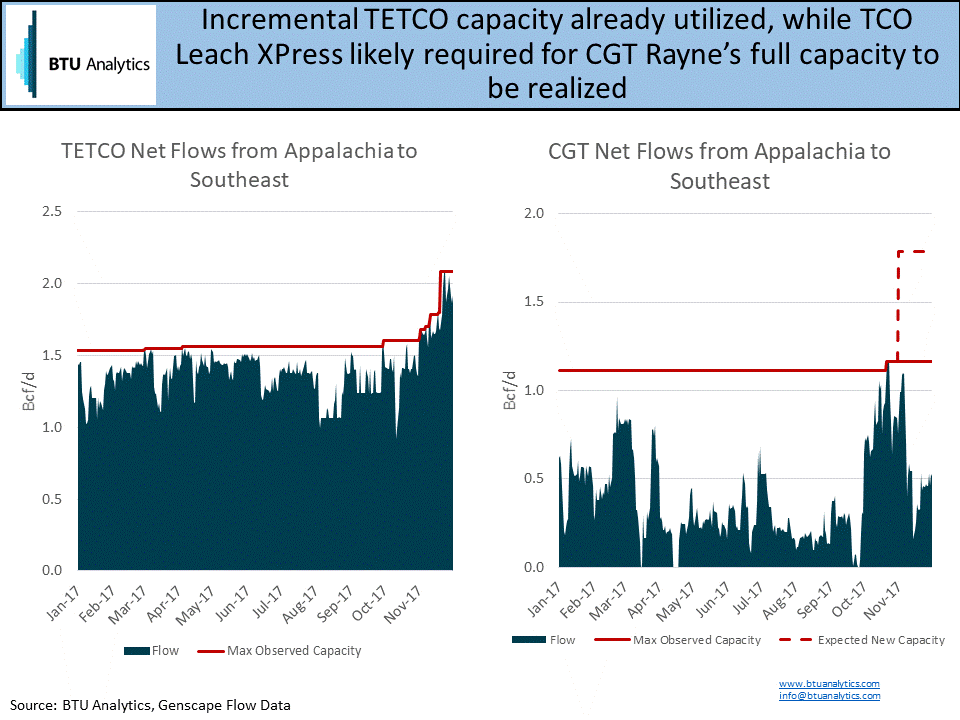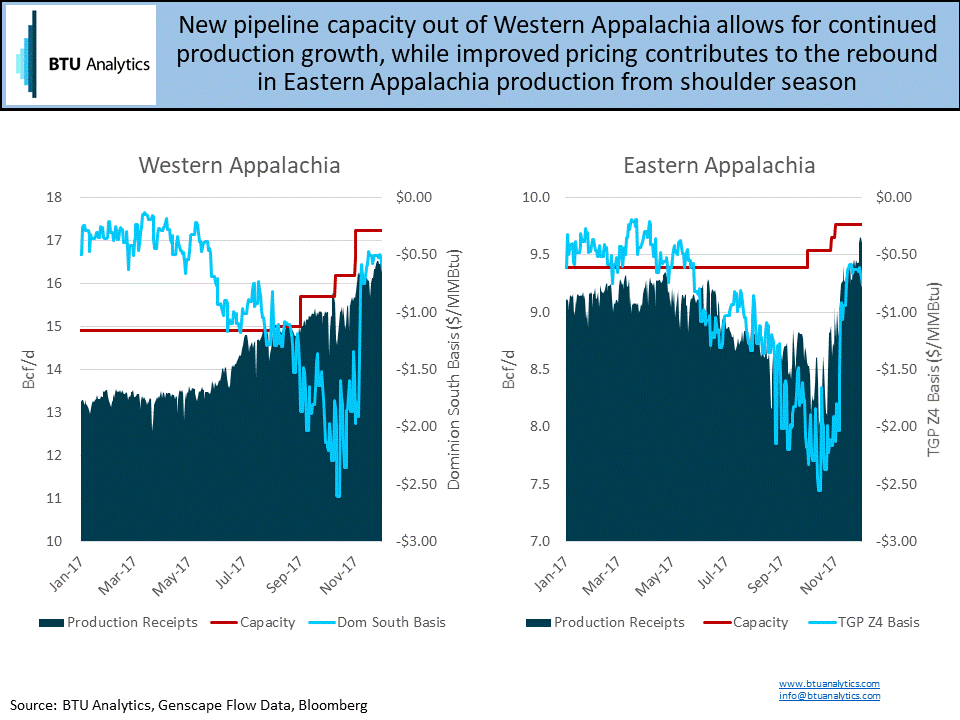November was an important and much-anticipated month for Northeast pipeline projects, with seven projects being placed into service, five of which add a total 1.15 Bcf/d of incremental natural gas takeaway capacity out of the region. These were brownfield projects on AGT, CGT, TETCO, and TGP, as summarized in the table below. One notable project absent from this list is TCO Leach XPress, which had been scheduled for a November startup, but has been delayed until January 2018.

Pipeline flow data shows the new TETCO backhaul capacity is already being utilized, with flows jumping nearly 500 MMcf/d since November 1, as seen in the figure below. Conversely, on CGT, there have not been observable incremental flows out of the region with the startup of Rayne Xpress. With other upstream bottlenecks on the TCO system connecting into CGT, Rayne’s full impact will likely not be realized until Leach XPress comes online in January.

Even without the full impact of Rayne XPress, new pipeline capacity has ushered in record production in the region, with production receipts exceeding 26 Bcf/d at the end of November. This brings the November average to 25.5 Bcf/d, which was 1.8 Bcf/d greater than October, as weak pricing resulted in shut in production at times during shoulder season.

Much of the new pipeline takeaway capacity, over 1 Bcf/d, was focused in Western Appalachia. However, the month-over-month growth in production receipts was evenly split between Western and Eastern Appalachia, at about 900 MMcf/d each. Production in Eastern Appalachia has been correlated to natural gas pricing, and thus production receipts decreased by about 0.5 Bcf/d at the end of summer and into shoulder season, as TGP Zone 4 basis weakened, as seen in the figure below. Stronger pricing with the start of winter first brought production back to previous levels, and incremental capacity has allowed for increased production seen at the end of November. In Western Appalachia, on the other hand, production has steadily grown since summer, with Rover becoming partially operational in September.

The projects that started up in November really mark the start of the next wave of new pipeline capacity set to come online in the region. The full completion of Rover and the startup of Leach XPress early next year are the main projects on the horizon. Next summer brings the anticipated startup of the greenfield portion of Atlantic Sunrise, which will provide 1.7 Bcf/d of incremental capacity out of Eastern Appalachia. Then another big slug of projects is slated to come online at the end of 2018, including Nexus, CGT Gulf Xpress and EQT’s Mountain Valley, which will add an additional 4.4 Bcf/d of takeaway capacity. Will production keep pace as these new projects come online and what are the basis implications as these projects startup? For answers to these questions and to keep up to date with the development of these infrastructure projects, check out the Northeast Gas Outlook.









